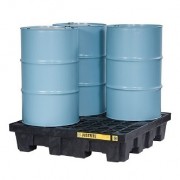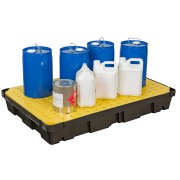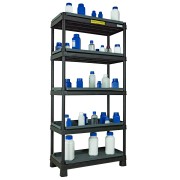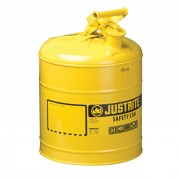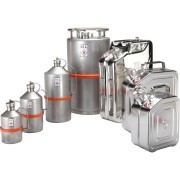
Safety equipments for storage and spill control



Equipment for the containment of hazardous products
GENERAL
All stored chemicals must be placed above a containment system.
Regulations vary depending on the industrial site or local authority, but also on the nature of the products stored.
REGULATIONS
Decree of 22 September 2021 amending the ministerial decrees of 24 September 2020 and 3 October 2010 relating to the storage of flammable liquids, operated within a facility classified for environmental protection subject to authorisation, the decree of 26 May 2014 relating to the prevention of major accidents in classified facilities mentioned in section 9, chapter V, title I of book V of the environmental code and the decree of 4 October 2010 relating to the prevention of accidental risks within classified facilities for environmental protection subject to authorisation.
For flammable liquids: for each mobile container or group of mobile containers containing at least one flammable liquid (or a liquefiable combustible solid), the minimum retention volume shall be at least equal to either the total capacity of the containers if this capacity is less than 800 L; or 50% of the total capacity of the containers with a minimum of 800 litres if this capacity exceeds 800 litres. For the storage of flammable liquids in mobile containers of the fuse-type, the minimum retention volume must be at least equal to the total capacity of the containers.
For other liquids likely to cause water or soil pollution, the retention capacity must have a volume at least equal to the greater of the following two values: 100% of the capacity of the largest tank; 50% of the total capacity of the tanks.
For the storage of mobile containers with a unit capacity of less than or equal to 250 litres, the minimum retention volume shall be equal to either the total capacity of the containers when this is less than 800 litres, or 20% of the total capacity of the drums with a minimum of 800 litres if this capacity exceeds 800 litres.
The retention capacity must be impervious to the products it may contain and resistant to the physical and chemical action of the products that may be collected.
SAFETY CABINETS for toxic products and MULTI-RISK SAFETY CABINETS
GENERAL
For obvious safety reasons (risk of fire, explosion, poisoning, corrosion, etc.), hazardous liquids must be stored and handled in suitable safety containers.
The transport of hazardous materials is subject to specific regulations. Only UN-approved containers guarantee an optimal level of safety for the transport of hazardous liquids.
Safety containers differ from safety receptacles in that they are equipped with safety features:
Flame arresters: prevent flames from spreading to the liquid contained in the container itself;
Pressure relief valve: prevents the container from exploding due to excessive pressure inside it.
Standardised pictograms: indicating the type of product stored in the container and eliminating any risk of mixing incompatible products.
Safety data sheets must also be available near workstations to enable emergency services to respond effectively.
Standardisation
UN (UNITED NATIONS):
Containers marked UN are approved for the transport of hazardous materials by road.
FM (FACTORY MUTUAL):
International insurance and accreditation body for safety equipment and business consulting.
CNPP (CENTRE NATIONAL DE PREVENTION ET DE PROTECTION):
Reference body that tests and inspects safety equipment.

